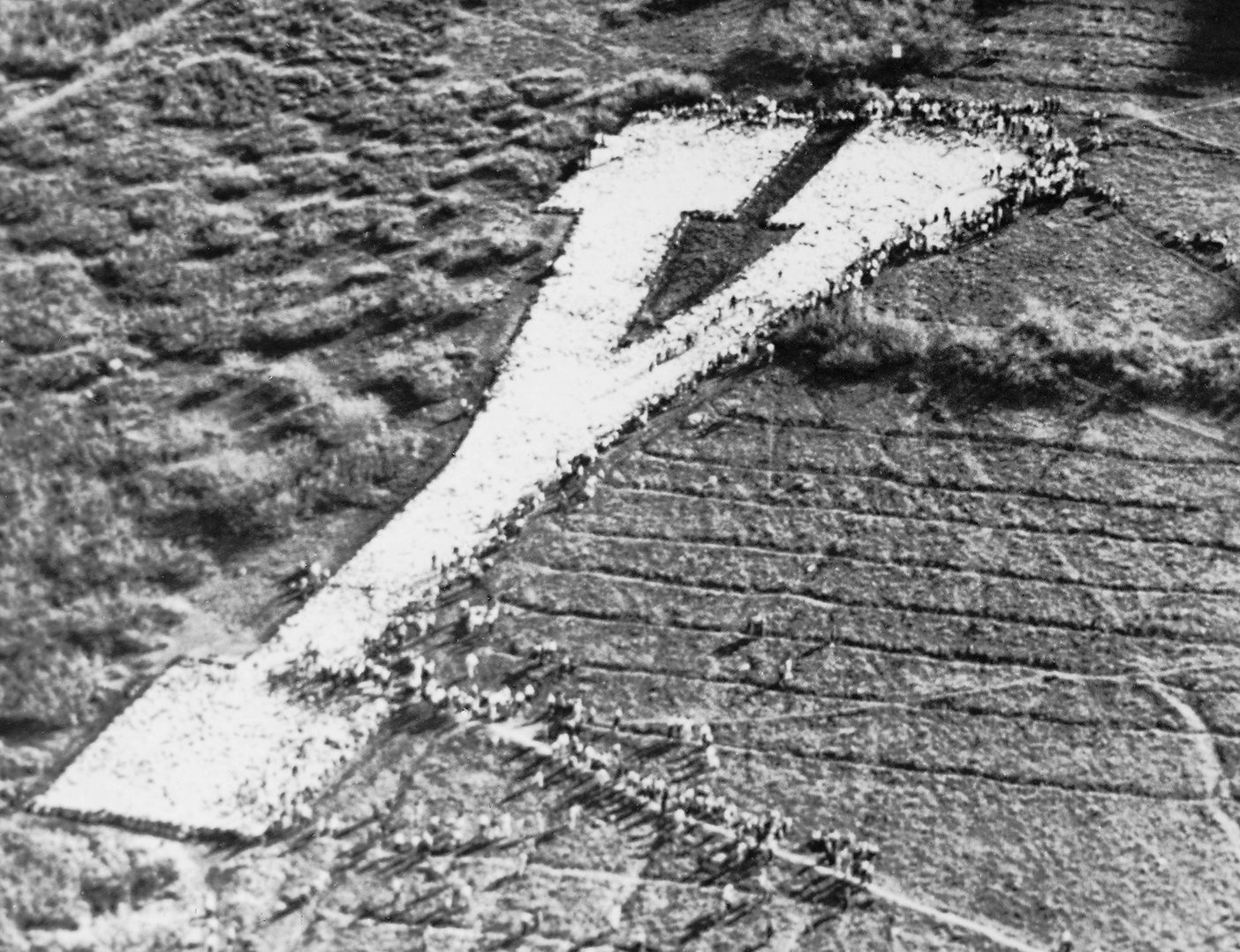The Y reminds us that perspective matters and failure is not final.

The letter y was introduced into the Roman alphabet around AD 100, long after most letters had already arrived there.¹ Since it largely played a role already occupied by another letter, the letter y has always had a bit of a tenuous position. At least one modern linguist still decries the letter y as a “luxury . . . , or rather a great nuisance,” whose presence would not be missed and whose absence would simplify spelling rules.²
The Y on the mountain has its own inauspicious origins. Its roots trace back to a student rivalry. In the spring of 1906, the junior class decided to demonstrate its superiority to the senior class by etching a large ’07 on the mountainside. Not surprisingly, upon awakening to that sight, the senior class objected, and “an all-day mountainside altercation ensued,” with punches exchanged on both sides. To resolve the conflict, school leaders rallied all classes to work together to put the letters B, Y, and U on the mountain.³
The project began with the letter Y to ensure that all the letters would be properly centered. The group started work in the early morning, expecting to be done by 10 a.m. But the task proved much bigger than expected. By midafternoon some students had fainted and had to be carried off the hill, and it was 4 p.m. before the Y was thinly covered. The effort was so exhausting that, in the words of one involved, “no attempt was made to cover the other two letters,” and the Y was left standing by itself.⁴
“If we choose to view events in our lives from the eternal perspective that emanates from an understanding of God’s eternal plan of salvation, our lives will be happier and more productive.”
One might say that the Y on the mountain is the result of fisticuffs and fatigue. And yet there is in that history, like the somewhat tenuous history of the letter y, two brief lessons.
First, symbols such as the letter y or the Y on Y Mountain ultimately gain meaning in our lives not so much because of their physical shape or presence but because of what we choose to make of them. Given its late arrival, its limited role, and at times its tenuous place in the alphabet, some choose to view the letter y as a “nuisance,” but I, for one, delight in words such as yes, yearn, young, and even yikes.
Similarly, given its origins, some could view the Y on the mountain as a symbol of conflict and exhaustion. However, I choose to view it as a symbol of unity and energy. If we choose to view events in our lives from the eternal perspective that emanates from an understanding of God’s eternal plan of salvation, our lives will be happier and more productive.
Even with that more positive perspective, there will be times when you feel overwhelmed and when, despite your best efforts, you fall short of your goal, when you feel that you have utterly failed—just like the exhausted students must have felt when the B and the U were left off the mountain. But, as it turns out, having only a Y on the mountain may have been the optimum result. After all, as someone once observed, “‘Lighting the BYU’ just doesn’t have the same ring to it”⁵ as does “lighting the Y.”
The second lesson, therefore, is that when you feel like you have failed and that nothing is going right, I pray that you will trust God’s remarkable promise that He can make all things work together for the good of those who love Him (see Rom. 8:28). He can turn an altercation between rival classes and a failed attempt to stamp a mountain with three letters into a symbol of unity and success. More important, He can make good come from all our efforts—not just from our successes but also from our failures. God is that good and that powerful. We just need to trust Him.
NOTES
1. See Michael Rosen, Alphabetical: How Every Letter Tells a Story (Berkeley, California: Counterpoint, 2015), pp. 18, 376.
2. Anatoly Liberman, “The Oddest English Spellings, Part 20: The Letter ‘Y,’” OUPblog, May 15, 2013, blog.oup.com/2013/05/oddest-english-spellings-part-20-letter-y.
3. Peter B. Gardner, “An Ode to the Y,” BYU Magazine, Fall 2016, p. 24.
4. See Harvey Fletcher, Autobiography of Harvey Fletcher (Provo: H. Fletcher, c. 1967), pp. 15–16.
5. Gardner, “Ode,” p. 25.
This essay is adapted from a commencement address given by BYU president Kevin J Worthen on April 25, 2019.












